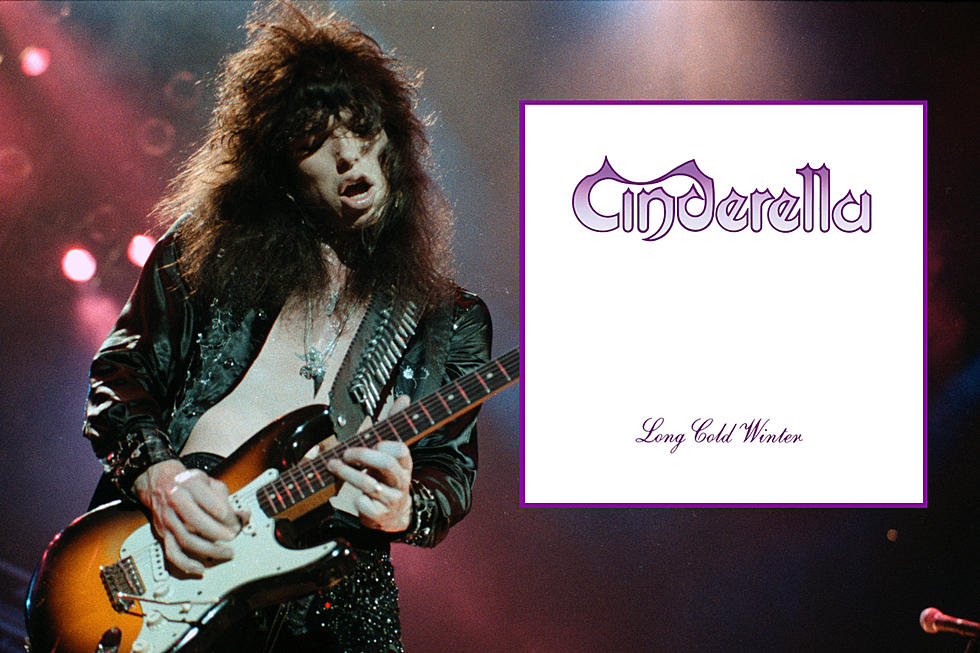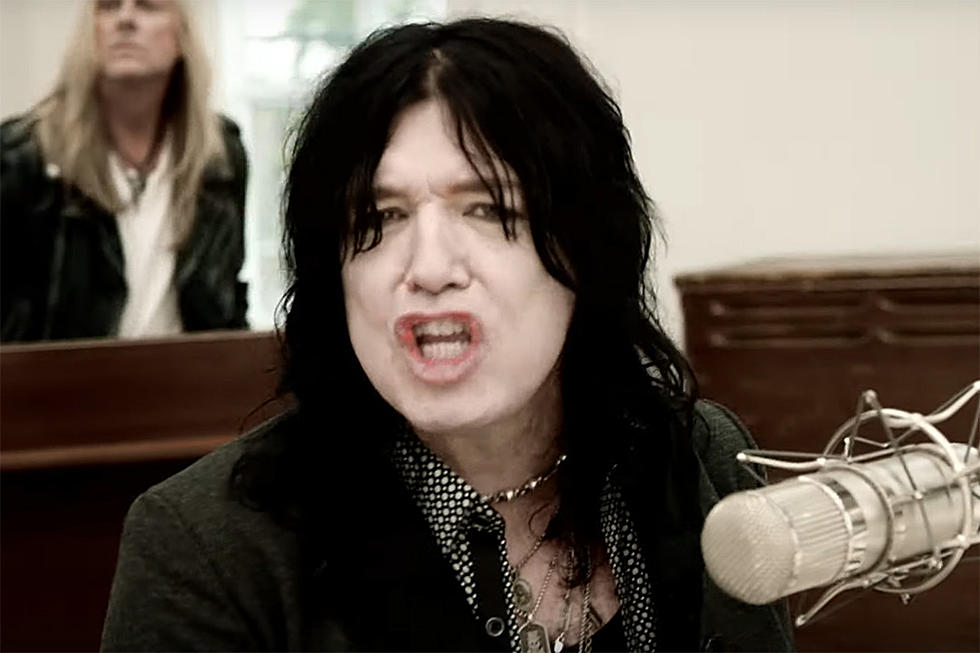
How Cinderella Avoided a Sophomore Slump on ‘Long Cold Winter’
The Philadelphia-based band Cinderella hit record stores and MTV in 1987, joining a crowded crop of hair metal hitmakers that included Bon Jovi, Poison, Europe, Stryper, Winger, Mötley Crüe and more.
The band’s debut album, Night Songs, hit No. 3 on the Billboard 200 album chart not because its songs were deep treatises on global conflicts or the socioeconomic repercussions of public policy like some other chart-toppers from the era; Night Songs was a hit because it rocked.
These guys melded AC/DC’s histrionics to Poison’s arena-ready spectacle and did so with a bluesy, guitar-swinging swagger. Singer and main songwriter Tom Keifer was a pouting pretty boy who also knew his way around the neck of a Les Paul. They were the total package and, at first blush, also appeared to be as glammy and superficial as the other bands that looked just like them.
Keifer had more depth than that, though, and when it came time to write Cinderella’s second album, Long Cold Winter, he hoped to avoid the sophomore slump by taking stock of his surroundings and writing songs from the perspective of a young man uncertain of where he was at any given point or who was around him. Because of the band’s brutal touring schedule, this meant writing the record on the road, using the technology available to him at the time.
“I had what we called a ‘Port-a-Studio,’ as it was referred to in the ’80s, and looking back on it, it was not nearly as portable as the studios today,” Keifer told Sleazeroxx. “It was a giant road-case that opened up and speakers popped out of it, and there were racks of gear popping out of it, you would maybe get an 8-track recording on cassette out of it if you were lucky. So, I would roll that into the hotel and just sit and write.”
Watch Cinderella's 'Gypsy Road' Video
The tour was the first time the band had spent an extended period away from its home base, and Keifer drew creative sustenance from the experience. “That was the first time I really left Philadelphia and being on tour was really inspiring,” he noted. “Everything that was going on just inspired a lot of music.”
Released May 21, 1988, Long Cold Winter was a cut above the salacious chicks-and-booze anthems or cowboys-on-steel-horses ballads their peers were churning out. Keifer had riff-rock story songs like “Gypsy Road” and “The Last Mile.” He had road-weary sentiments in a rock song like “Comin’ Apart at the Seams” and in the ballad “Comin’ Home.” Did someone say ballad? He had a monster power ballad called “Don’t Know What You Got (Till It’s Gone).” And he had straight-up blues songs in “Bad Seamstress Blues” and the title track. It was a varied collection of songs, some really high-quality stuff.
When it came time to put everything down on tape, Keifer wanted to move away from the lite-metal production values that marked the biggest albums the genre had produced, like Bon Jovi’s Slippery When Wet, Poison’s Look What the Cat Dragged In and Cinderella’s own debut.
“That was really the sound of the times,” Keifer said in Songfacts, “and pretty much any engineer you walked into a studio with was going to be going for the big, exploding snare drums and more of a slick and processed sound.
“With Long Cold Winter, we started to think about [production] more,” he continued. “We started to have more organic instruments -- pianos and acoustics. We toned down the slickness or the processing a little bit, although that record's still pretty slick.”
Watch Cinderella's 'Don't Know What You Got' Video
One member of the band absent from both records was drummer Fred Coury, replaced on Long Cold Winter by Cozy Powell (who's played with Jeff Beck, Rainbow and Whitesnake) and Denny Carmassi (Heart, Montrose and others). “We hired Fred for the Night Songs tour,” Keifer explained to Screamer, “and Fred was very young. He came in to do the Long Cold Winter album and ... [we] spotted a bit of, shall we say, inexperience in Fred.”
Producer Andy Johns wanted to use different drummers, and brought in Powell and Carmassi. Keifer said the situation worked out for Coury eventually. “Fred took that experience and learned from it,” Keifer told Screamer. “Obviously, he stayed in the band and he toured on Long Cold Winter, worked really hard and ended up drumming on [Cinderella’s next record] Heartbreak Station and did a fine job on it.”
The initial critical response was about what one would expect for a new Cinderella album. Rolling Stone typified the reaction from rock writers with a two-star review, saying Keifer suffered from “influencitis,” resulting in songs likewise suffering from “a sense of rock ‘n’ roll deja vu.” The magazine did, however, point out that “the top-notch musicianship and streetwise savvy displayed on the album should make Cinderella a force to be reckoned with.”
That qualification was amplified years later when, in a rather amusing critical reassessment, Rolling Stone placed Long Cold Winter at No. 10 on its list of the 50 Greatest Hair Metal Albums of All Time, claiming the record “ranks with any blues-rock of the ‘80s.” The magazine also lauded the album as a harbinger of modern-day country by putting it on a separate list of “50 Rock Albums Every Country Fan Should Own.”
What gets ridiculed in one era can be praised in another, but only if it has staying power. Regardless of whether he realized it at the time, Keifer was playing the long game with Long Cold Winter; his songs still stand up to repeated plays. Even today.
Top 100 '80s Rock Albums
More From Ultimate Classic Rock









